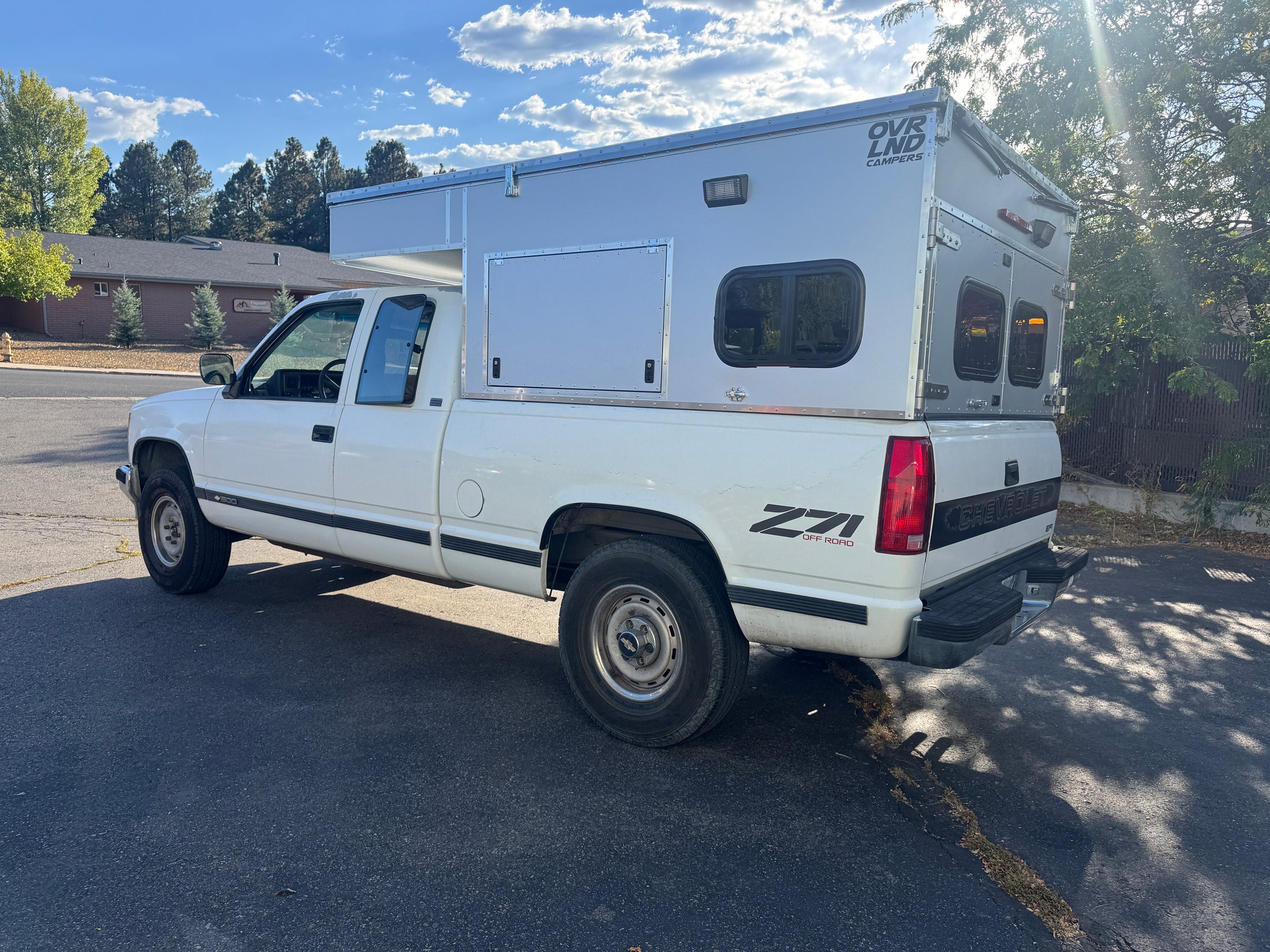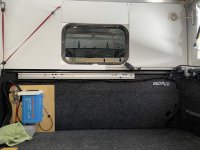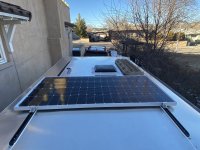I joined the fray. Bought a slightly used (or repo'd) camper from OVRLND last week. It had been sold previously and was spec'd with lots of doors and windows and stuff. The buyer couldn't/didn't pay in full and brought the camper back to OVRLND. Here's a quick list of how it is outfitted:
- Maxxair Plus fan
- fold down door, P-side rear
- small sliding window, P-side front
- fold up door, D-side front
- small sliding window, D-side rear
- solar panel hook-up
- sliding window, front
- windows in barn doors
- barn doors
- 3" extra height cab-over
- positive pressure valve thingy
- heater hose pass through
- three exterior flood lights, both sides and rear
- anodized silver exterior
- gas struts
It was built for a GMT400, but fits my '01 Chevy 2500HD Crew Cab Std Bed (GMT800) perfectly with a short extension riveted to the leading edge of the shell.
I think doing the wiring first is ideal. Then insulation. But I'm having a hard time figuring out electrical. I was planning to use my Ecoflow Delta Max to power fridge, lights, and fan. But it only has a 10amp output at the cigarette lighter port. That socket is enough to power the fridge, but seems like too little amperage to run everything. I saw some LED lights in this thread that run on a few milliamps. Clicked through to the link and they are out of stock. They would work, however. But I'm not sure how much the fan draws. Gotta research that. A quick look at some AI-generated info say minimum of 5 amps.
For insulation, I was thinking of using wool. anybody else done that? I know 1" foam is probably a much easier approach, but I prefer something more organic. Am I crazy? I cannot imagine how to keep it from sloughing down in the bays over time.
I am only about 10 pages into reading this thread; so, some of these questions may be answered here. I'll keep reading. Meanwhile, here are a few pictures of my OVRLND shell.
From the OVRLND site:
As seen on my truck:
--bb












